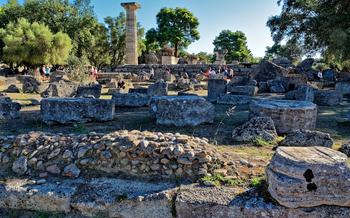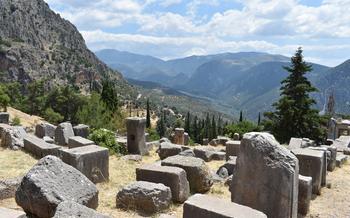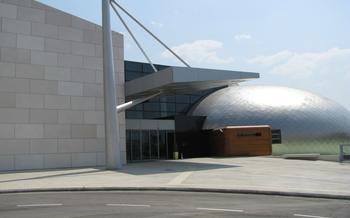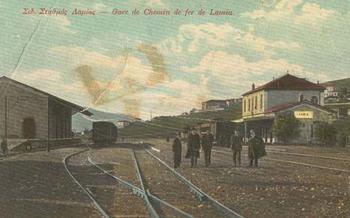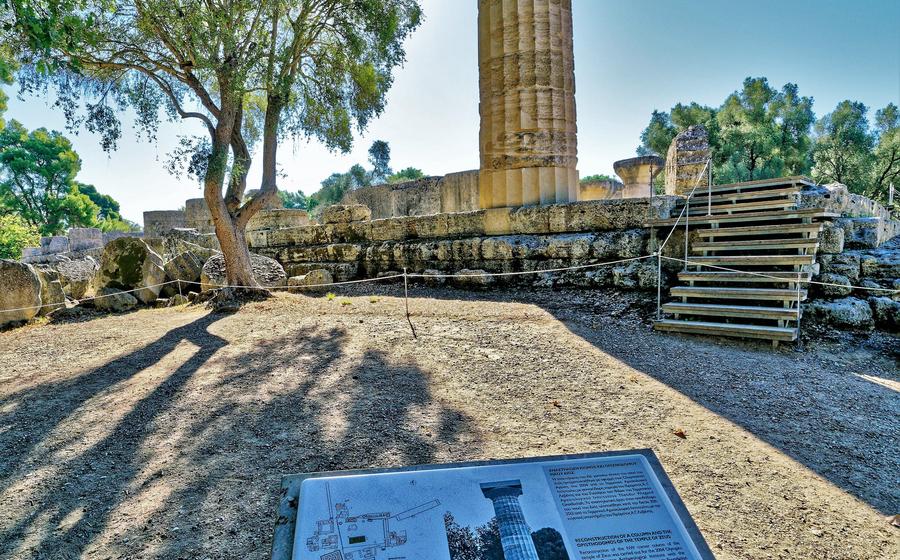
Necromanteion (Oracle of the Dead)
- History of the Necromanteion
- Location of the Necromanteion
- Discovery and Excavation of the Necromanteion
- Layout and Structures of the Necromanteion
- Necromantic Rituals and Practices
- The Oracle of the Dead
- Myths and Legends Associated with the Necromanteion
- Archaeological Findings and Artifacts
- Inscriptions and Texts from the Necromanteion
- Historical Significance of the Necromanteion:
- Visiting the Necromanteion Today:
- Nearby Attractions and Points of Interest:
- Accommodation and Dining Options Near the Necromanteion:
- Local Festivals and Cultural Events
- Insider Tip: Unveiling the Secret Path to the Underworld
History of the Necromanteion
The Necromanteion, also known as the Oracle of the Dead, holds a profound place in ancient Greek mythology and religious beliefs. According to legend, this sacred site was established by Hades, the god of the underworld, and his wife Persephone. It was believed to be a gateway to the realm of the dead, where mortals could communicate with the spirits of the deceased. The Necromanteion played a significant role in ancient Greek society, as people from all walks of life sought guidance and wisdom from the spirits of their ancestors or departed loved ones. These consultations with the dead were considered a form of necromancy, a practice that was both revered and feared. Historical accounts and archaeological evidence corroborate the existence of the Necromanteion, making it a fascinating and enigmatic site that has captivated the imaginations of scholars and historians for centuries.
Location of the Necromanteion
The Necromanteion is nestled in the verdant region of Epirus in northwestern Greece and holds a significant proximity to the ancient city of Ephyra, a prominent city-state in antiquity. The site is embraced by a breathtaking natural setting, where the Acheron River meanders through a captivating landscape, casting an ethereal aura upon the surroundings. In modern times, the village of Mesopotamos serves as the gateway to this sacred site, welcoming visitors to embark on a journey into the enigmatic realm of the dead. To reach the Necromanteion, one can embark on a scenic drive from major cities like Athens or Thessaloniki, immersing themselves in the picturesque vistas along the way.
Discovery and Excavation of the Necromanteion
The rediscovery of the Necromanteion is attributed to the renowned Greek archaeologist Sotirios Dakaris, who dedicated over three decades of his life to excavating and studying the site. Beginning in 1958, Dakaris led a team of archaeologists in a systematic exploration of the area, meticulously uncovering the ancient structures and artifacts that had lain buried for centuries.
During the excavations, Dakaris and his team employed a combination of traditional archaeological methods and innovative techniques to reveal the secrets of the Necromanteion. They carefully removed layers of earth and debris, exposing the foundations of buildings, intricate mosaics, and numerous inscriptions that shed light on the site's history and practices.
The collaboration between Greek and international teams of archaeologists ensured a comprehensive and multidisciplinary approach to the excavation process. Experts from various fields, including archaeology, history, and philology, worked together to interpret the findings and gain a deeper understanding of the Necromanteion's significance.
The ongoing efforts to preserve and restore the Necromanteion are a testament to its importance as a cultural heritage site. Conservation work focuses on stabilizing and protecting the ancient structures, while also ensuring that the site remains accessible to visitors and researchers alike.
Layout and Structures of the Necromanteion
The Necromanteion, also known as the Oracle of the Dead, is a fascinating archaeological site that offers a glimpse into the ancient Greek beliefs and practices surrounding the afterlife. The complex is comprised of several key structures, each serving a distinct purpose.
The entrance to the Necromanteion is marked by a monumental gateway, leading visitors into a sacred way that symbolizes the journey from the world of the living to the realm of the dead. The sacred way is lined with stone walls and features niches where offerings were placed to appease the spirits.
At the end of the sacred way lies the temple, the central structure of the Necromanteion. The temple is believed to have been dedicated to Hades, the god of the underworld, and Persephone, his wife. Within the temple, visitors would make offerings and perform rituals to seek guidance from the dead.
Another significant structure within the Necromanteion is the tholos, a circular building located near the temple. The tholos is believed to have been the place where the necromancers, or priests who communicated with the spirits, conducted their rituals. It features a central pit, where offerings were burned, and a series of benches where visitors would sit to receive messages from the dead.
The Necromanteion's unique architectural elements and features set it apart from other ancient Greek sites. The combination of the sacred way, temple, and tholos creates a distinct and immersive experience, allowing visitors to feel a connection to the ancient world and its beliefs about the afterlife.
Necromantic Rituals and Practices
The Necromanteion was not just a place of worship; it was also a place where visitors could seek guidance and advice from the spirits of the dead. These rituals were conducted by priests or necromancers who acted as intermediaries between the living and the dead. The process typically involved a series of offerings, sacrifices, and libations to appease the spirits and gain their favor. Visitors would then pose their questions or requests, and the spirits would respond through various signs or omens, such as visions, dreams, or sounds. The necromancers would interpret these responses and convey them to the visitors, who would then make decisions or take actions based on the guidance they received. These rituals were believed to be highly effective, and people from all over the ancient world sought the wisdom and counsel of the Oracle of the Dead.
The Oracle of the Dead
The Oracle of the Dead, also known as the Necromanteion, played a crucial role in facilitating communication with the underworld and seeking guidance from the spirits of the deceased. Visitors seeking advice or answers to their questions would undergo a series of rituals and procedures to prepare for the encounter.
Before entering the oracle, visitors would make offerings and sacrifices to the gods of the underworld, such as Hades, Persephone, and Hermes. These offerings could include animals, food, or precious objects, and were believed to appease the spirits and make them more receptive to communication.
Once the offerings were made, visitors would enter the temple and approach the priests or necromancers who presided over the rituals. These individuals were believed to have the ability to communicate with the dead and interpret their messages.
The visitors would then pose their questions or requests to the oracle, often written on clay tablets or inscribed on lead sheets. The priests would then perform specific rituals and incantations to summon the spirits and receive their responses.
The answers or guidance from the oracle could come in various forms, such as visions, dreams, or voices. The priests would interpret these messages and relay them to the visitors, who would then make decisions or take actions based on the advice received.
Consultations with the Oracle of the Dead were not limited to ordinary citizens; many prominent figures and rulers from across the ancient world sought guidance from the spirits. The oracle's reputation for providing accurate and insightful advice contributed to its fame and influence throughout the Greek world.
Myths and Legends Associated with the Necromanteion
The Necromanteion is steeped in mythological lore, most notably recounted in Homer's epic poem, the Odyssey. In this tale, the cunning hero Odysseus descends into the underworld to seek guidance from the spirit of the blind prophet Tiresias. Odysseus performs a series of rituals, including sacrificing a ram and pouring libations, to summon the spirits of the dead. Tiresias provides Odysseus with valuable advice on his perilous journey home, helping him to overcome obstacles and ultimately reunite with his family.
Other mythological figures are also associated with the Necromanteion. Hercules, the mighty demigod, is said to have visited the oracle to seek guidance on his twelve labors. Orpheus, the legendary musician, is believed to have journeyed to the underworld to retrieve his beloved wife, Eurydice. These myths highlight the significance of the Necromanteion as a place of spiritual connection and a gateway to the realm of the dead.
Beyond these famous tales, the Necromanteion is interwoven with a rich tapestry of local myths and legends. Stories of encounters with spirits, tales of curses and prophecies, and legends of lost treasures abound, adding to the mystique and allure of this ancient site.
Archaeological Findings and Artifacts
The excavations at the Necromanteion have yielded a wealth of significant artifacts that shed light on the daily life, religious practices, and economy of the site. These discoveries include pottery, coins, inscriptions, and jewelry, each contributing to our understanding of the ancient world.
Among the most notable artifacts are the numerous pottery fragments, which range from simple utilitarian vessels to elaborately decorated pieces. These ceramics provide valuable insights into the eating and drinking habits, as well as the artistic styles and craftsmanship of the Necromanteion's inhabitants.
Excavations have also unearthed a significant number of coins, minted in various Greek city-states. These coins offer clues about the trade and economic activities that took place at the Necromanteion, as well as the circulation of currency in the region.
Inscriptions, both on stone and pottery, have proven to be a rich source of information. They include dedications to deities, prayers for guidance, and even curses against enemies. These inscriptions provide a glimpse into the personal lives and beliefs of those who visited the oracle, as well as the religious practices that were performed at the site.
Jewelry, such as rings, earrings, and necklaces, has also been discovered during excavations. These ornaments not only attest to the personal adornment practices of the Necromanteion's visitors but also offer insights into their social status and wealth.
The ongoing research and analysis of these artifacts contribute to our understanding of the Necromanteion's history, religious significance, and cultural context. They are displayed and preserved in museums and archaeological collections, where visitors can marvel at the tangible remains of this ancient oracle.
Inscriptions and Texts from the Necromanteion
The Necromanteion has yielded a wealth of inscriptions that provide invaluable insights into the beliefs and practices associated with the Oracle of the Dead. These inscriptions, carved on stone tablets or pottery shards, range from dedications to the gods and goddesses of the underworld to prayers for guidance and protection. Some inscriptions record the names of visitors who sought advice from the oracle, along with their questions and the responses they received. These texts offer a glimpse into the hopes, fears, and anxieties of those who came to the Necromanteion seeking answers from the dead.
Deciphering and interpreting these ancient texts is a challenging task, as many of them are fragmentary or written in obscure dialects. However, scholars have made significant progress in translating and analyzing these inscriptions, shedding light on the religious practices and beliefs of the ancient Greeks. The inscriptions also provide valuable information about the social and economic status of the visitors who came to the Necromanteion, as well as the types of questions they posed to the oracle.
Historical Significance of the Necromanteion:
The Necromanteion stands as a testament to the deep-rooted beliefs and practices of the ancient Greeks regarding the afterlife. It played a significant role in shaping their understanding of the relationship between the living and the dead, serving as a bridge between the realms of the mortal and the divine. The site's association with prominent figures from Greek mythology, such as Odysseus and Hercules, further highlights its importance in ancient Greek culture. Moreover, the Necromanteion's influence extended beyond Greece, leaving a lasting impact on other ancient civilizations and religions. The site's contributions to our understanding of ancient Greek mythology, philosophy, and religious practices make it an invaluable resource for scholars and historians seeking to delve into the complexities of the ancient Greek worldview.
Visiting the Necromanteion Today:
To fully immerse yourself in the enigmatic aura of the Necromanteion, plan your visit carefully. The site is open to the public, offering a unique opportunity to explore its ancient structures and unravel its secrets. Operating hours vary depending on the season, so check in advance to avoid disappointment.
Admission fees are nominal, allowing you to access the entire complex and embark on a journey through time. Guided tours are available, providing valuable insights into the history, mythology, and rituals associated with the Necromanteion. These tours are highly recommended, as they bring the site's significance to life and enhance your overall experience.
As you wander through the sacred grounds, let the atmosphere envelop you. Signage is provided throughout the complex, offering historical context and explanations of the various structures. Take advantage of these informative panels to deepen your understanding of the site's significance.
While exploring the Necromanteion, you'll find basic facilities available to ensure a comfortable visit. Restrooms are located near the entrance, and there's a small café where you can grab a refreshing drink or snack.
The Necromanteion hosts special events and festivals throughout the year, adding an extra layer of enchantment to your visit. Check the official website or local tourism offices for updates on upcoming events.
For the most enjoyable experience, plan your visit during the shoulder seasons (spring or autumn) when the weather is pleasant, and crowds are smaller. Summers can be hot and crowded, while winters can be cold and rainy.
So, step into the realm of the dead, explore the Necromanteion, and unravel its captivating secrets. It's a journey that will leave an indelible mark on your soul.
Nearby Attractions and Points of Interest:
In addition to the Necromanteion, the region boasts a wealth of historical sites and natural attractions. Just a short drive away, visitors can explore the ancient city of Ephyra, with its well-preserved fortifications and ruins of temples and theaters. The picturesque village of Mesopotamos, situated on the banks of the Acheron River, offers a glimpse into traditional Greek life and is a popular starting point for boat tours along the river.
For nature enthusiasts, the stunning Vikos Gorge, one of the deepest canyons in the world, is a must-see. With its towering cliffs, lush forests, and crystal-clear streams, it offers breathtaking hiking opportunities. The nearby beaches of Preveza and Parga, with their pristine waters and golden sands, provide a welcome respite from the heat and a chance to soak up the Mediterranean sun.
Complementing the region's natural beauty are several charming towns and villages worth exploring. The historic town of Ioannina, with its scenic lake and well-preserved Ottoman architecture, is a cultural gem. The mountain village of Zagori, with its traditional stone houses and cobblestone streets, offers a glimpse into a bygone era.
To fully immerse yourself in the local culture, be sure to sample the region's culinary delights. From fresh seafood and locally produced olive oil to traditional dishes like "pastitsada" (beef stew with pasta) and "spanakopita" (spinach pie), the flavors of Epirus are sure to tantalize your taste buds.
Accommodation and Dining Options Near the Necromanteion:
When planning your visit to the Necromanteion, you'll find a range of accommodation options to suit different budgets and preferences. From charming guesthouses to modern hotels, there are plenty of places to rest and recharge after a day of exploring this ancient site.
For a truly immersive experience, consider staying in the nearby village of Mesopotamos, which is just a short walk from the Necromanteion. Here, you'll find traditional Greek tavernas serving delicious local cuisine and warm hospitality. Savor the flavors of fresh seafood, succulent grilled meats, and homemade delicacies as you soak in the village's authentic atmosphere.
If you're looking for a more luxurious stay, head to the coastal town of Parga, located about 30 kilometers from the Necromanteion. This picturesque town boasts a stunning beachfront, crystal-clear waters, and a vibrant nightlife scene. Indulge in fine dining restaurants, unwind at beachfront bars, or simply relax on the sandy shores, enjoying the breathtaking views of the Ionian Sea.
For budget-conscious travelers, there are several hostels and guesthouses in the area that offer affordable accommodations. These options are perfect for backpackers and solo travelers who want to meet fellow adventurers and experience the local culture.
No matter where you choose to stay, be sure to sample the region's culinary delights. From fresh seafood caught daily to locally produced olive oil and honey, the cuisine of Epirus is a feast for the senses. Don't miss the chance to try traditional dishes like "pies," savory pastries filled with cheese, spinach, or meat, or "skordalia," a garlic-infused mashed potato dish served with fried fish.
Local Festivals and Cultural Events
The region surrounding the Necromanteion is rich in cultural traditions and vibrant festivals that celebrate its unique heritage. One of the most notable events is the Ephyra Festival, held annually in the nearby town of Igoumenitsa. This three-day festival showcases traditional Greek music, dances, and local delicacies, offering visitors an immersive experience of the region's culture. Visitors can witness live performances, participate in workshops, and savor the flavors of traditional Greek cuisine.
Another highlight is the Necromanteion Night Festival, which takes place during the summer months at the Necromanteion site itself. This atmospheric event features guided night tours of the ancient ruins, live music performances, and storytelling sessions that bring the myths and legends of the Oracle of the Dead to life. Visitors can wander through the dimly lit pathways, marvel at the illuminated structures, and immerse themselves in the mystical aura of the site after dark.
These festivals and events provide an excellent opportunity to connect with the local community, learn about their customs and traditions, and experience the vibrant cultural heritage of the region. Visitors are encouraged to embrace the festive spirit, participate in the activities, and create lasting memories of their journey to the Necromanteion.
Insider Tip: Unveiling the Secret Path to the Underworld
Beyond the main tourist routes, a hidden path unveils a secluded corner of the Necromanteion, known only to a few. Follow the ancient cobblestone road that winds its way through the dense vegetation, leading you to a secluded clearing. Here, you'll find a small, unassuming cave entrance, believed to be an alternative passage to the underworld. As you step inside, the air grows cool and damp, and a sense of awe washes over you. Imagine the thrill of discovering this hidden portal, retracing the steps of ancient seekers who ventured into the unknown in search of guidance from the dead.

